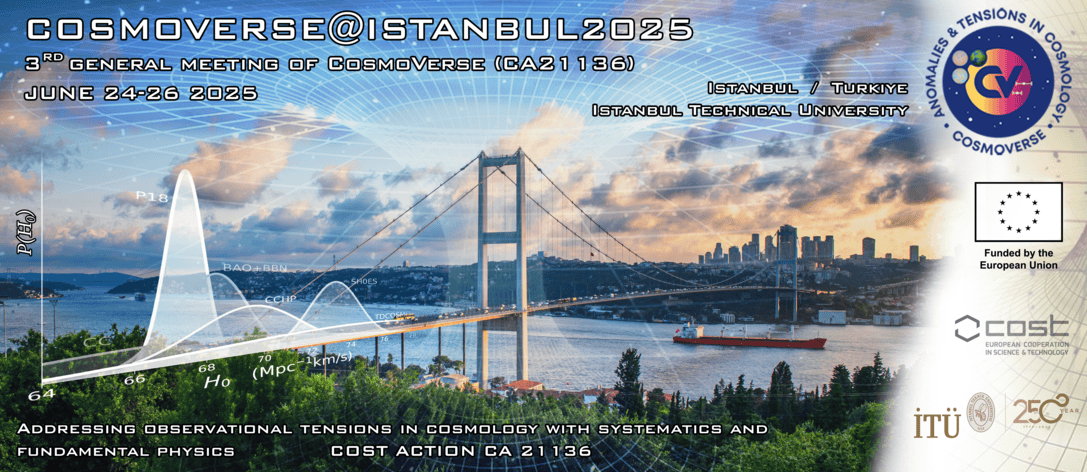Speaker
Description
Baryon Acoustic Oscillations (BAO), together with Type Ia Supernovae (SNeIa), increasingly disfavor late-time modifications as viable resolutions to the Hubble tension. A key argument against post-recombination solutions—the so-called “no-go theorem”—relies critically on BAO data: since BAO constrain angular scales proportional to rdH0, a higher H0 implies a smaller rd, in tension with the value inferred from ΛCDM fits to Planck or BBN+BAO. However, the BAO analysis pipeline involves several steps that assume a fiducial cosmology, raising concerns about potential model dependence. In this proof-of-principle work, we explore the impact of a possible miscalibration (whose origin we remain agnostic about) in the BAO scale that effectively shifts the inferred BAO positions closer to the observer, leading to larger values of rdH0. We find that, even if such a modification were present, “popular” late-time modifications would still fall short of resolving the Hubble tension, to no small extent because of tight constraints on the shape of the expansion history arising from high-redshift uncalibrated SNeIa.

